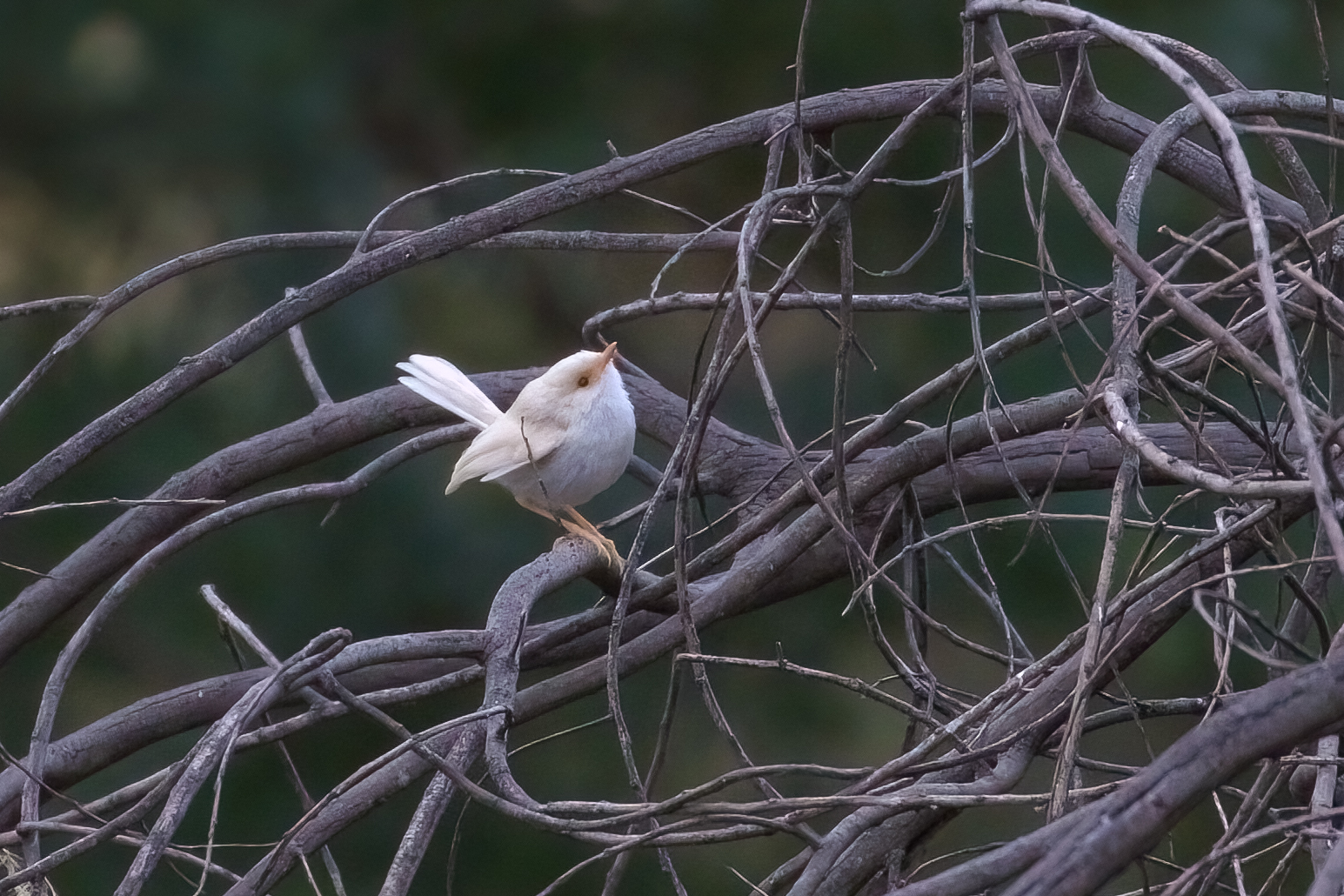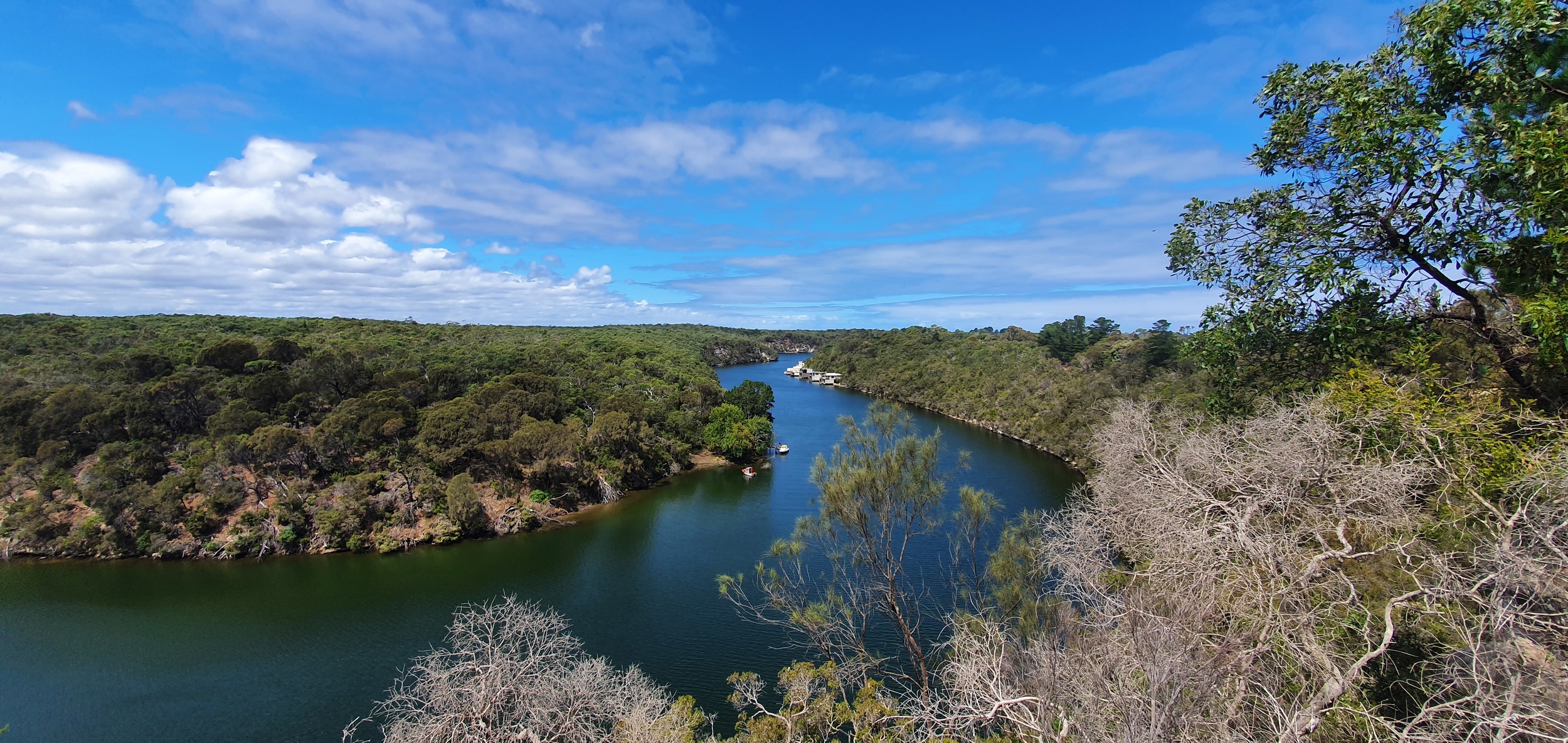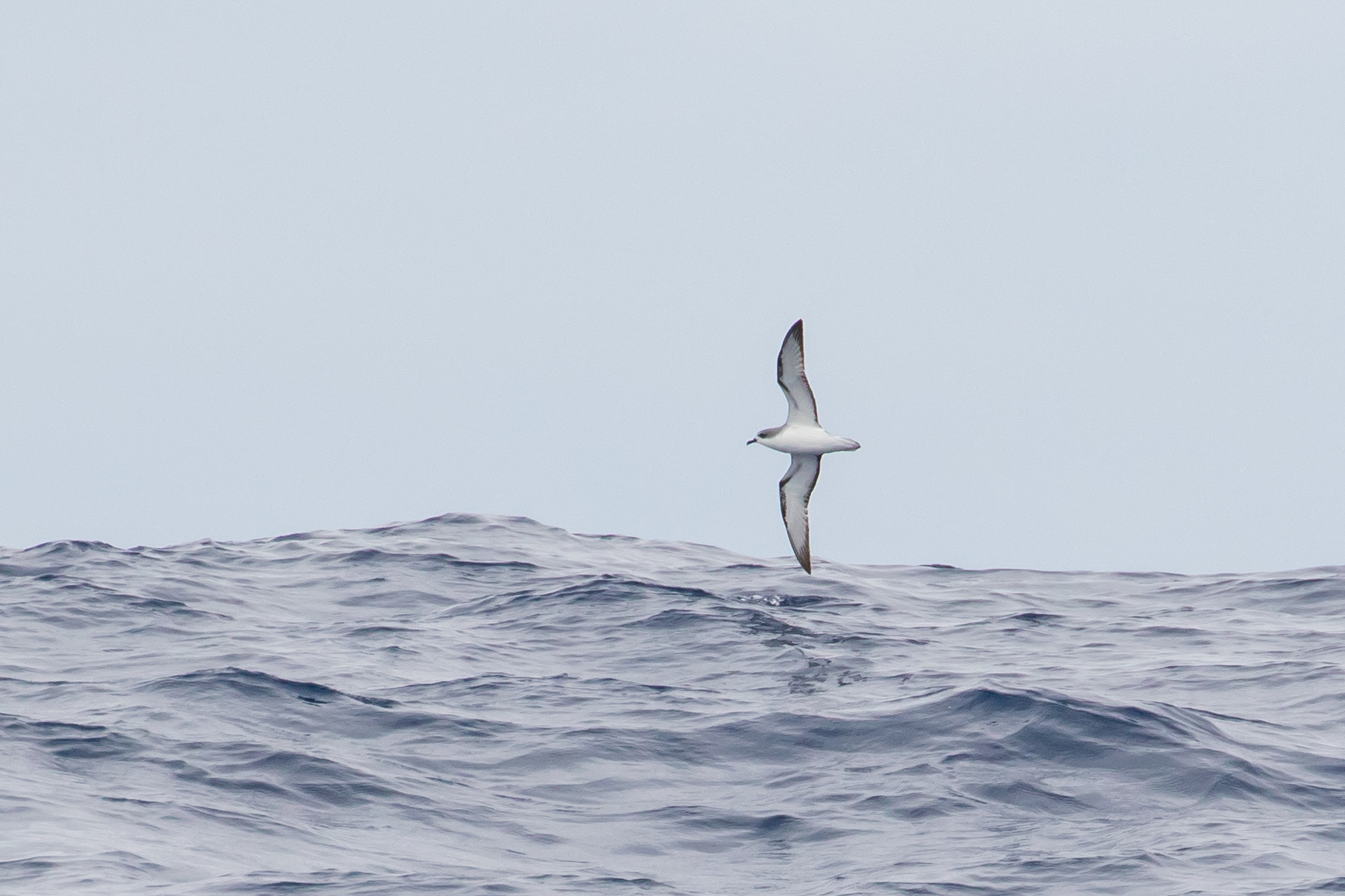Just under a month back I had managed to book myself onto the first Port Mac pelagic of the year scheduled for 14th February, and teamed up with Mike and Steve Potter to do some terrestrial birding before and after the trip to the shelf. Mike is doing an SA Big Year and there are a number of species in the far south east of the state that just creep over from Victoria. I’m not that precious about my SA list, but there were some nice birds on Mike’s target list, and his enthusiasm for the task has been infectious. I’ve done more birding in SA this year than the whole of 2020, and — don’t tell anyone — I might just be looking at my year list too.
Straight after work on Friday evening Mike picked me up, then we grabbed Steve from Blackwood and were on our way south. A pub meal in Keith (after dipping on the servo Blue-faced Honeyeaters) was a welcome stop before an hour later we set up camp — me and Steve in our swags, Mike in the back of the X-Trail — in the lovely national park campsite near Naracoorte Caves, hopefully very convenient for our first target of the weekend. We were the only campers there.
We rose early, but once packed up and ready to hit the road we hit a fairly significant snag: the battery in Mike’s X-Trail was completely dead. And it’s an automatic, so no push-starting. And did I mention that we were the only campers there? We pushed the car out of the campsite to a road where we hoped to flag down a passerby, while Mike made a call to RAA and Steve walked up to the National Park visitor centre in the hope of finding a ranger or visitor who’d be willing to help us get the car started using Mike’s jump-leads. While we waited for the RAA to arrive, I did some birding around the car and found our first nice bird of the trip, a beautiful and very unusual leucistic Superb Fairywren. Fearful of missing a passing car I did not venture far from the road so managed record shots only.

Long story short, we did get the car started, courtesy of a good samaritan passer-by, but we were unable to replace the battery until Mt Gambier. So once we had reassembled the team, we birded, but in shifts, with one of us staying with the still running car while the others walked off into Naracoorte Caves NP bushland. Almost immediately Mike found the first of our targets for the weekend, a lovely and rare (for SA) White-bellied Cuckooshrike. Then almost back at the car I heard some Red-tailed Black Cockatoos, and we located them by venturing not far into the bush. I’d had my first for SA (and hence the first graptogyne) in October last year with Mike on my last pelagic trip down south and since this race is endangered and only found down here, it was an important one for Mike’s Big Year. Despite the car troubles, it was still only 9am and we had two key birds UTB (under the belt). We arrived into Mt Gambier, and had the battery sorted out within 5mins at a local battery place (funnily enough) so after a coffee and breakfast stop we were on our way to next destination actually ahead of our expected schedule.



Ewin Ponds is a lovely spot, great for freshwater snorkeling (if you have the full-body dry-suit needed to fend off the cold water, even at this time of year). But this site did not yield the hoped-for Azure Kingfisher (“Asia Kingfisher, as pronounced in ‘Straya), so we decided on some wader watching at French Point and Danger Point while the tide was favourable. This was a good and fortuitous choice because as we bombed along the 8-mile creek road I spied something from the passenger window: “Swift!!!” I shouted and Mike pulled up as fast as possible. I feared a false alarm, but luckily my instincts were right and half a dozen White-throated Needletails were hawking over the road and adjacent fields. Needletails are nature’s perfect aerodynamic torpedoes, and WT Needletail, a giant among swifts, is the fastest creature of any in self-powered flight. One of my favourite moments from the trip. Though David Harper dismissed these as “Chooks … but winning” in the SE this time of year, they were my first for the state and I replied: “Best fucking chooks ever 




French Point and Danger Point grew our lists but we failed to locate a couple of the rarer waders we expected and hoped for (so we would return the next day). Acting on a tip from Davie Harper, it was on to Donavan’s — literally within metres of the Victorian border — for our next target. Setting up our scopes high above the beautiful Glenelg River at a scenic lookout, we scanned the far bank up and down hoping to find a small orange and blue jewel. This was beginning to seem a hopeless task when casually Steve announced he had it. Yes, the view was distant (unlike the eye-ball to eye-ball views from the Yellow Waters Cruise in August — see here), but we were on a roll.

We spent some time walking through the very lovely Snow Gum CP and accumulated a nice list of birds including Golden Whistler (definitively the youngi race that remains Golden, not the fuliginosa race, now lumped with Western, which accounts for most “Golden-type” birds in SA), White-naped Honeyeater, Shining bronze-cuckoo, Eastern Yellow- Robin and Forest Raven. At Dry Creek Landing near Donavans I heard a Pied Currawong from across the river but we failed to see one, and then ended the day’s birding at Pick Swamp. As well as hundreds of Magpie Geese and a few Brolga, we also picked up Striated Fieldwren, Southern Emuwren and Blue-winged Parrot, though the final birding act of the day would be a dip for Mike and me, and a brief glimpse for Steve, of a very vocal but very invisible Olive Whistler.
The Victoria Hotel just about served its purpose of providing a place to sleep the night, though I would be sure not to bring the family here; even less salubrious and than the Capertee Royal that Nikki described as something out of The Shining. Last week I watched “The Dry” at the cinema with Nikki, and if you have seen that you can picture my digs at the Vic just by transporting Eric Bana’s accommodation to the coast.
Anyway, moving on… at 6.15 next morning we were on our way to the continental shelf courtesy of Jaymar Star. This was a curious trip for me. The quality of birds was up there with any trip I’ve been on, but two of the best (and new) birds were fly-pasts, and despite relatively calm conditions I suffered some queasiness for the first time ever. So though I enjoyed it as always, I struggled to raise the excitement the quality of the birding should have sparked — it’s only in retrospect that I realise what a cracker it was :-). Maybe I should have popped another couple of Kwells part-way through…
The signs were good and interesting for a top trip from early on; before we’d even got halfway to the shelf there were high numbers of White-faced Storm Petrels, which we would normally only encounter once we’d got to deeper water and stopped the boat (we would end the day with more than 100). We also picked an Arctic Skua and numerous Flesh-footed Shearwaters, as well as the occasional Gannet and Mollymawks. As we approached the shelf a shout went up for an interesting shearwater being harassed by a pair of Fleshy-foots. This bird was slightly smaller, pale unders and seemed browner above. I saw it briefly in flight and when it sat for a short while on the water, but did not manage any photos before it was chased off by the fleshy-foots. We stopped very soon after and burlied in the hope it was still around, but that initial minute or so was the only contact we had with it. Fortunately others had managed pics, and it was rapidly confirmed from back-of-camera scrutiny to be Buller’s Shearwater, a lifer for most on the boat, and the cause of great excitement. I was pleased, sure, but less excited, partly because of the brief, ultimately rather unsatisfying experience with the bird, and maybe also because I had seen a Buller’s Shearwater much better than this from the Titi-tiri Matangi Ferry from Auckland in 2010. Here’s two of my pics from way back then:


Though the Buller’s Shearwater refused to come back, the slick created by fish oil and shark liver attracted a good variety and good numbers to the boat. We had a good selection of the usual mollymawks: Black-browed, Shy and (Indian) Yellow-nosed as well as a welcome visit from another of Walter Buller’s namesakes, Buller’s Albatross (Walter Buller was a NZ ornithologist) for my best photo ops since 2014.





As many as a hundred White-face Strom-petrels picked their way across the surface, coming very close to the boat at times. In smaller numbers we had Grey-backed Stormies, and later in the day a couple of Wilson’s Strom-petrel swung by.









The most numerous birds were the Flesh-footed Shearwaters, but we also had good numbers of Great-winged Petrel, Grey-faced Petrel and White-chinned Petrel. A couple of Short-tailed Shearwaters and a Sooty Shearwater joined in the action.



Great albatross were well represented: we had at least 4 NZ Wandering Albatross (gibsoni) and a Northern Royal Albatross.









Another Arctic Skua cruised through, but then another Skua arrived; consultation between the experts on the boat and some of the top sea-bird minds around the country have concluded that this bird is a Pomarine Skua. …


By 10:45 or so there were still good numbers of birds around the boat but we were not getting any new species. I was also feeling a bit queasy and hence a little jaded, keen to head for home. However I continued, like the trooper I am, to scan the horizon, and as I did for the gazillionth time, a pale-bellied petrel arced across my binocular view at about 150m range. Shit, this looks interesting! As it banked I could see greyish uppers and maybe even a darker W, and I wracked my brain to try and stammer out “Pterodroma”, but had a mental bock, eventually calling out “Soft-plumaged”. It was visible for only around 30 seconds, but fortunately others had again managed pics, and once again back-of-camera id came to the rescue: Cook’s Petrel, another NZ vagrant, and only the second for SA! I was able to get a bit more excited about this one than the first-for-SA earlier in the day, probably because I found it, but once again I was disappointed to have no personal image, and the brevity of the views. Here’s a pic that Colin Rogers managed and has kindly given permission for me to us on this blog:

After the usual sausages and chops (I forced myself to eat, thinking this might help wit the sea-sickness, a bit like a fry-up can help with a hangover — this theory didn’t pan out, in case you were wondering) we finally did head for home, and I was grateful for a coffee and cake at Periwinkles Cafe. Once back to shore I started to reflect further on what an excellent day at sea it had been. A first and a second for SA, and a fabulous supporting cast. Mike had added 22 species to his year list and was justifiably ecstatic.
One of the good things about summer pelagics is that daylight savings means there is still time for birding afterwards. Mike, Steve and I headed back to Pick Swamp. Sadly we would have yet another extended encounter with the still-vocal-but-invisible Olive Whistler, but we did add one more to the trip list (and my year list) when an Australasian Bittern flushed across the reedbed. This must be almost the most reliable site in the country for Bittern.



1 Comment
Comments are closed.